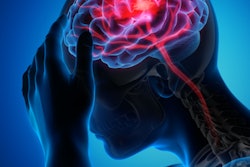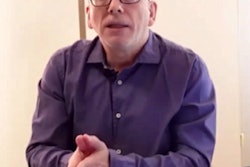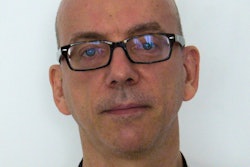
Radiologists should think of their specialty as more than just a job, according to presentations on 24 May opening the Spanish Society of Medical Radiology (SERAM) biennial meeting in Pamplona, Spain. The opening session featured SERAM Vice President Dr. Pablo Valdés Solís and RSNA President Dr. Vijay Rao.
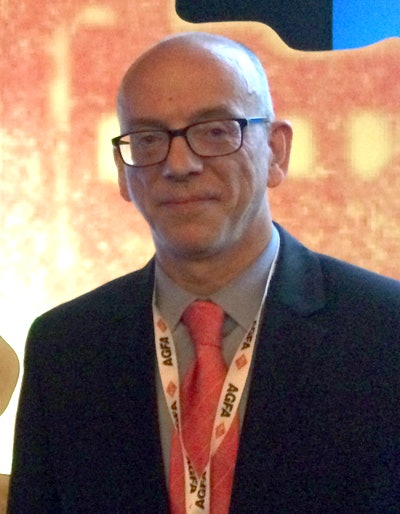 SERAM Vice President Dr. Pablo Valdés Solís.
SERAM Vice President Dr. Pablo Valdés Solís.The discussion included talks on artificial intelligence (AI), big data, and robotics, with the conclusion that these technologies are here to stay. Indeed, these technologies represent an opportunity for radiologists to reinvent themselves, Valdés told SERAM 2018 attendees.
"We need radiologists behind the machines to conduct our transition to a new way of working. Our mission as scientific societies can be essential in leading this change and helping members to adapt to a complex environment," said the future president of SERAM, the organization that has set the tone for Spanish radiology for the past 102 years.
Questioning the future
Many experts are questioning the future of radiology, arguing that artificial intelligence could become an alternative to radiologists. But these opinions reflect a lack of knowledge of radiology's complexity and overestimate machines' capacities.
"Recent developments have been extraordinary, but a lot remains to be understood," Valdés said.
AI technologies come with a number of not insignificant risks and issues. Deep learning requires teaching and adjusting to the systems in which they are being implemented. Technical problems have already been experienced, such as overfitting, which AI algorithms adjust too rigorously when they are being trained, possibly complicating the evaluation of problem cases.
Another problem is the black-box nature of AI, in which little is known about the exact process by which AI systems take a decision or another. Data bias is another challenge, and it has been shown that AI systems can be sexist and racist, Valdés said.
On top of that, technical problems with AI remain to be solved. A typical example is adversarial images, in which invisible variations between images can completely prompt an AI algorithm to render an incorrect diagnosis.
"One of the main problems we identify with AI is that machines have no common sense," Valdés said.
Last but not least, these new approaches in data analysis and knowledge generate ethical dilemmas. Applying Beauchamp's principles -- autonomy, beneficence, nonmaleficence, and justice -- can be tricky for AI systems.
"Whose responsibility is it when AI makes an error? How does the physician-patient relationship change?" Valdés asked. "Informed consents are redefined, and the principles we currently use are no longer valid, neither in clinical practice nor in research. Data property and reaction to incidental finding that is detected by a big-data-based system are some of the new questions that are raised by these technologies."
This whole list of constraints is the reason why many experts believe AI systems are here to stay but will not replace radiologists, Valdés argued.
"We will get used to these new technologies just like we did in the past with IT and digital imaging," he said.
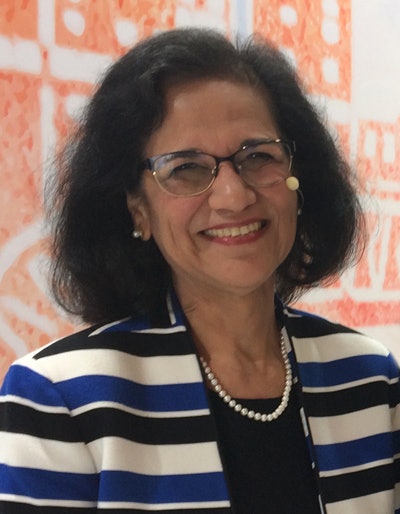 RSNA President Dr. Vijay Rao.
RSNA President Dr. Vijay Rao.But to ensure AI will become an additional tool in the radiologist's arsenal and not a threat, one needs to make a clear difference between what is a job and what is a profession. A profession encompasses concepts of universality, affective neutrality, and collectivity orientation, according to physician Dr. Diego Garcia, a leading Spanish expert in bioethics. A job embraces no such values. Part of the current crisis in medicine is due to the fact that many professionals are acting as if they had a job -- not a profession.
Radiologists should also take inspiration from author and motivation guru Simon Sinek, who described the so-called golden circle, Valdés recommended.
"After analyzing many different companies, Sinek concluded that success did not depend on what businesses do -- the external circle -- or how they do it -- the medium circle -- but rather why they do it," Valdés told the SERAM 2018 crowd. "It's only when you're thinking of why you do things, and in our case that's the patient and improving healthcare, that you're successful. In other words, we're only successful when we think of what we do as a profession and not a job."
Rao also contemplated the future of radiology in her talk, and she concluded that future best practices using new technologies could include imaging study requests based on evidence-based criteria and using targeted standardized protocol that is informed by aggregated data from the electronic medical record, as well as shortened MRI sequences and CT scans using lowered radiation dose.




